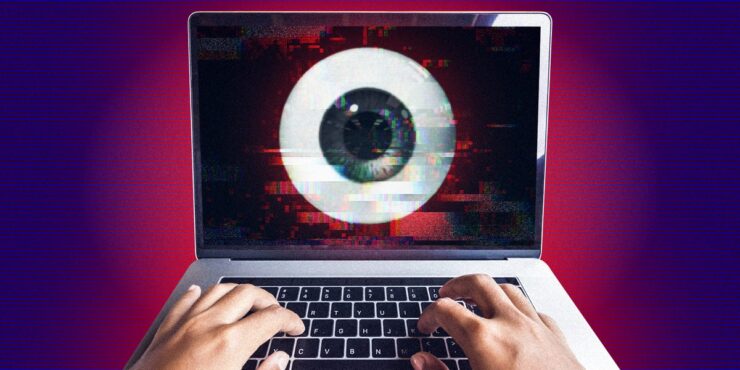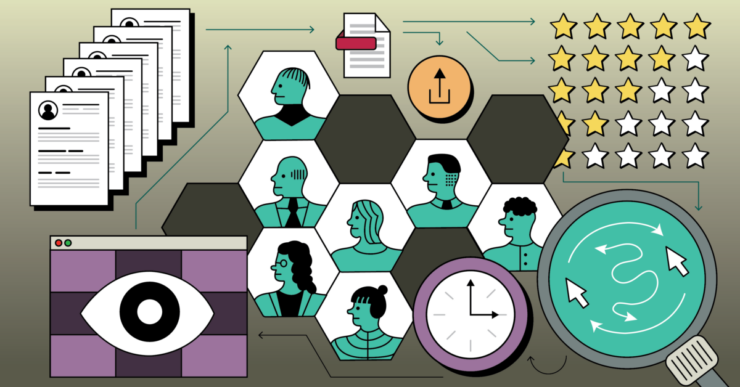We live in an age of remote work and flexible schedules. Therefore, ensuring employee productivity has become a primary concern for many businesses. This has given rise to a new technology called bossware. It is also known as employee monitoring software. The name is a combination of the words boss and software. It reflects its function as a digital tool for employers to monitor their workforce.
Bossware tracking can be valuable for companies seeking to maintain efficiency and security. However, it also raises questions about privacy and the balance between management and autonomy. Let’s explore how bossware tracking works. We will also understand the different types of monitoring it offers and the implications for employees and employers.
What is bossware?

Bossware is a software that monitors and tracks employees’ activities during work hours. It has gained prominence with the shift toward remote work. But it has existed in various forms for years. It has served industries where employee supervision is critical.
Bossware tracking can give employers insights into how their teams spend their time and identify potential security risks. It can also help employers ensure compliance with industry guides and regulations. This is especially crucial in finance, healthcare, and legal services.
Types of monitoring in bossware

Bossware tracking includes various monitoring techniques designed to capture specific information about employee activities. Here’s an overview of the most common methods.
-
Screen capture and recording
The method involves regularly capturing screenshots of an employee’s computer or recording their screen in real-time. It allows employers to see what applications are open and what websites are visited.
-
Keystroke logging
Also known as keylogging, this technique records every keystroke an employee makes. It can reveal patterns of behavior and detect unauthorized activities. But it can be invasive and is often viewed as a breach of privacy.
-
Website and application monitoring
Bossware can track which websites and applications employees use. It provides insights into the productivity of each employee. Employers can set up alerts for certain kinds of monitoring, including when employees access non-work-related sites during work hours.
One such employee monitoring software is Controlio and it helps organizations gain valuable insights into daily workflows, manage workload balance and measure employee performance while respecting their privacy. This software makes it simpler to increase employee productivity, refine work policies, and strengthen data security.
-
Email and communication monitoring
It involves tracking emails, chat messages, and other forms of digital communication. It can help ensure compliance with company policies and detect inappropriate behavior or leaks of sensitive information.
-
GPS and location tracking
For employees who work remotely or travel for business, bossware can use GPS to monitor their location. This type of tracking can be useful for fleet management and field service operations. However, it also raises issues over employee privacy outside of work hours.
The pros and cons of bossware

Bossware tracking has advantages and disadvantages; its impact depends on how it’s implemented and used within an organization.
Pros
-
Productivity monitoring
Bossware can help employers identify productivity gaps and ensure employees stay on task during work hours.
-
Security and compliance
Companies can prevent data breaches and unauthorized access by tracking communications and activities. This is particularly important in industries with strict compliance requirements.
-
Accountability and performance metrics
Bossware can provide quantifiable data on employee performance. It allows employers to set benchmarks and measure productivity. This can be useful for performance evaluations and identifying high-performing employees.
-
Remote work oversight
As remote work becomes more common, bossware offers a way to maintain oversight and ensure remote employees work effectively.
Cons

-
Privacy concerns
Bossware tracking can be intrusive. It raises concerns about employee privacy and autonomy. If not implemented thoughtfully, it can cause mistrust and resentment among employees.
-
Ethical considerations
The use of certain types of monitoring, like keystroke logging or screen recording, can be seen as unethical if not transparently communicated to employees. Ethical use of bossware requires clear policies and consent.
-
Employee morale
Excessive employee tracking can negatively impact employee morale, leading to stress and reduced job satisfaction. It can also create a micromanagement culture, which is counterproductive to employee engagement.
-
Legal risks
Employers must manage a complex legal scenario when using bossware, as different regions have varying regulations regarding employee monitoring. When employers do not adhere to these laws, it can cause legal repercussions.
Best practices for implementing bossware

Implementing bossware requires a delicate balance. It should be between achieving organizational goals and respecting employee privacy. Here are some best practices to help you implement bossware responsibly.
1. Transparency and communication
Employers should openly communicate with employees about the use of monitoring software. This includes detailing what data is being collected and people with access to it. Transparency creates trust. It also helps employees understand the rationale behind the monitoring.
2. Consent and compliance
Ensure you have obtained the necessary consent from employees before deploying bossware. This is a legal requirement in some jurisdictions. Employers should also familiarize themselves with applicable laws and regulations governing employee monitoring in their region. Compliance with such rules is crucial to prevent legal issues.
3. Clear policies and guidelines
Develop clear policies that outline the limits of bossware. This should include information on which types of monitoring will be used and what constitutes acceptable use. Share these policies with employees. You can also encourage them to ask questions or voice concerns. Create a process for updating these policies to adapt to changing circumstances.
4. Purposeful and targeted monitoring
Avoid excessive or intrusive monitoring that extends beyond the intended scope. You can instead focus on collecting data relevant to productivity. Other aspects include security and compliance. For example, you may have a goal to ensure employees work productively. You can then monitor work-related applications rather than capture every keystroke.
5. Respect for employee autonomy
Excessive monitoring can lead to a culture of micromanagement. It can harm employee morale and productivity. Balance oversight with autonomy. You can do so by allowing employees to manage their work processes. Set clear expectations for performance and outcomes. But avoid constant surveillance that undermines employee trust.
Bottom line
Bossware tracking is a powerful tool for employers seeking to monitor and manage their workforce. When used appropriately, it can enhance productivity and compliance. However, it needs thoughtful consideration of privacy and ethics. Following the best practices and ensuring transparent communication can help employers maximize bossware while creating a positive work environment.
